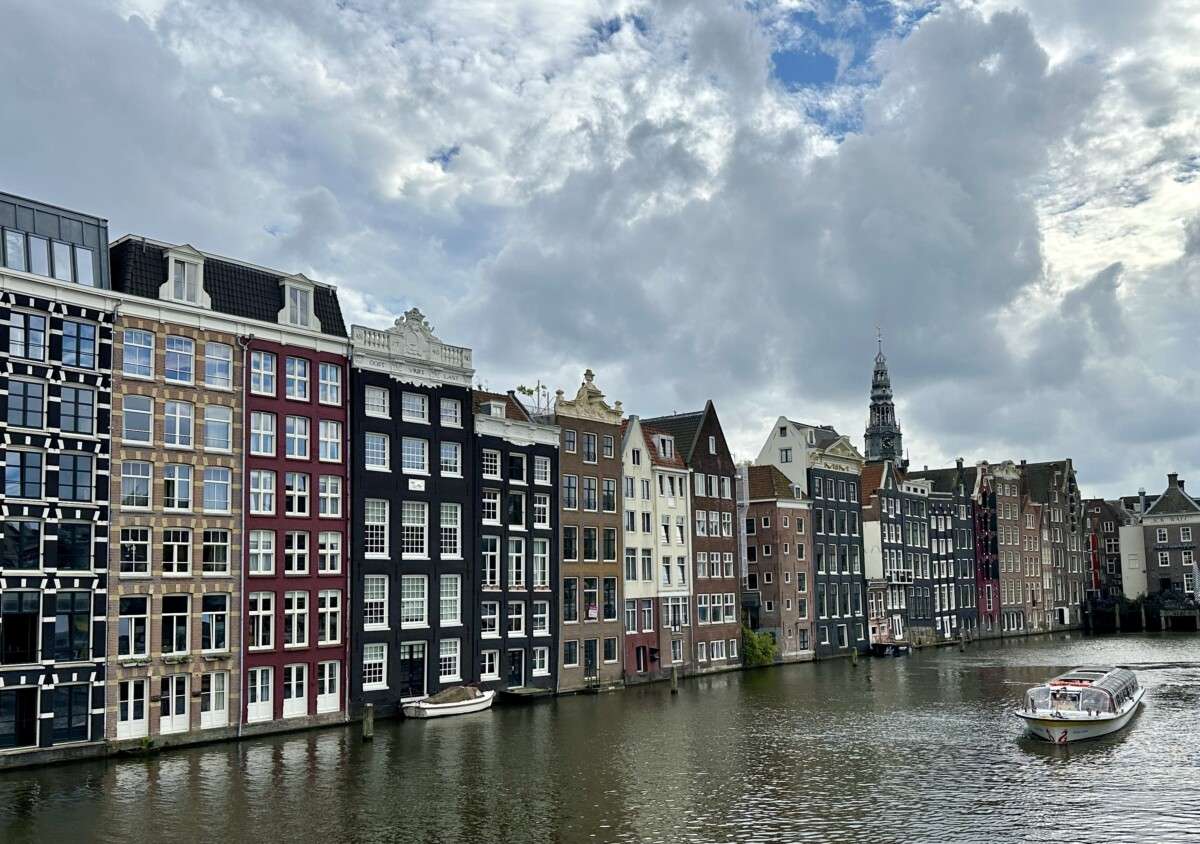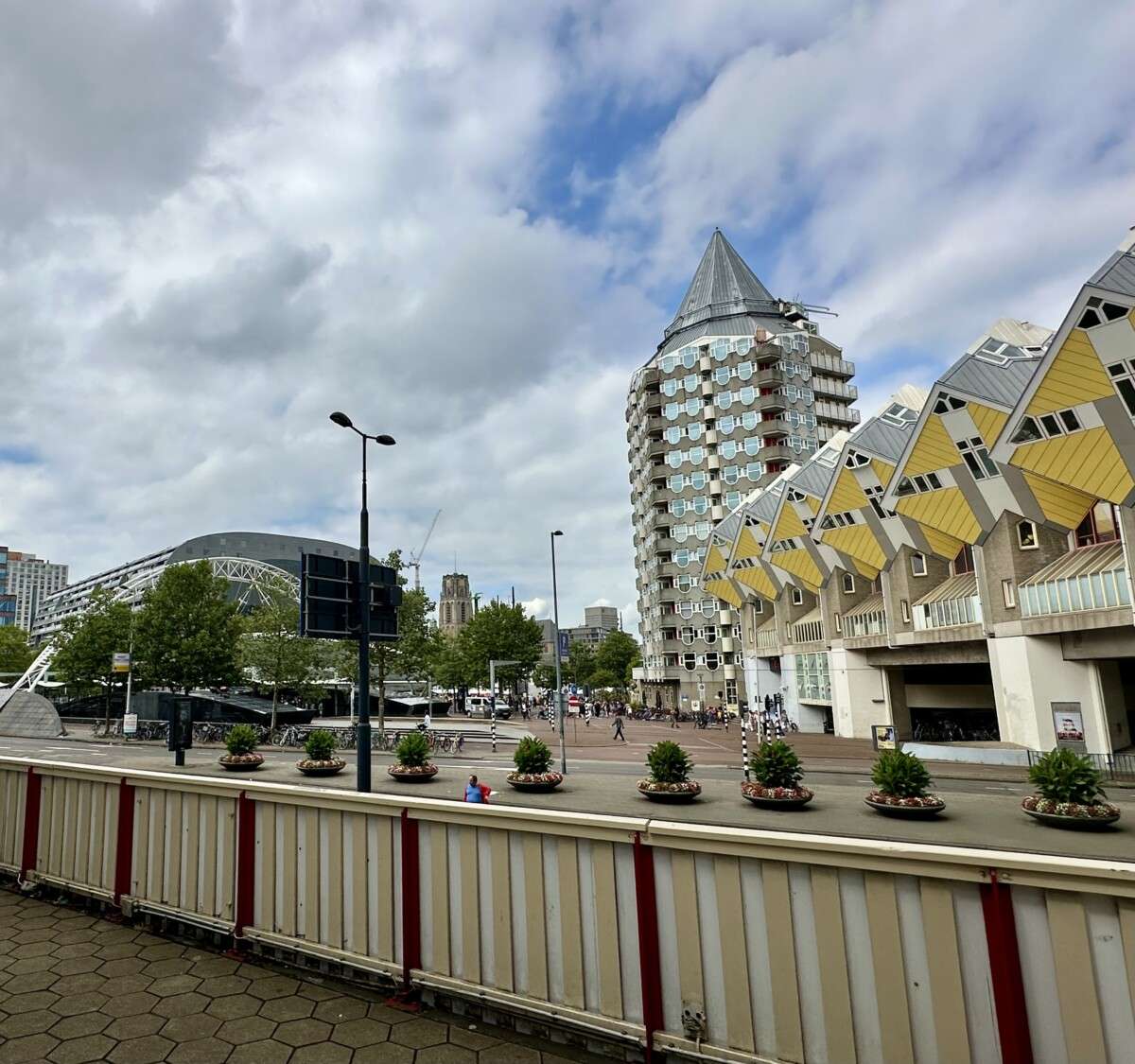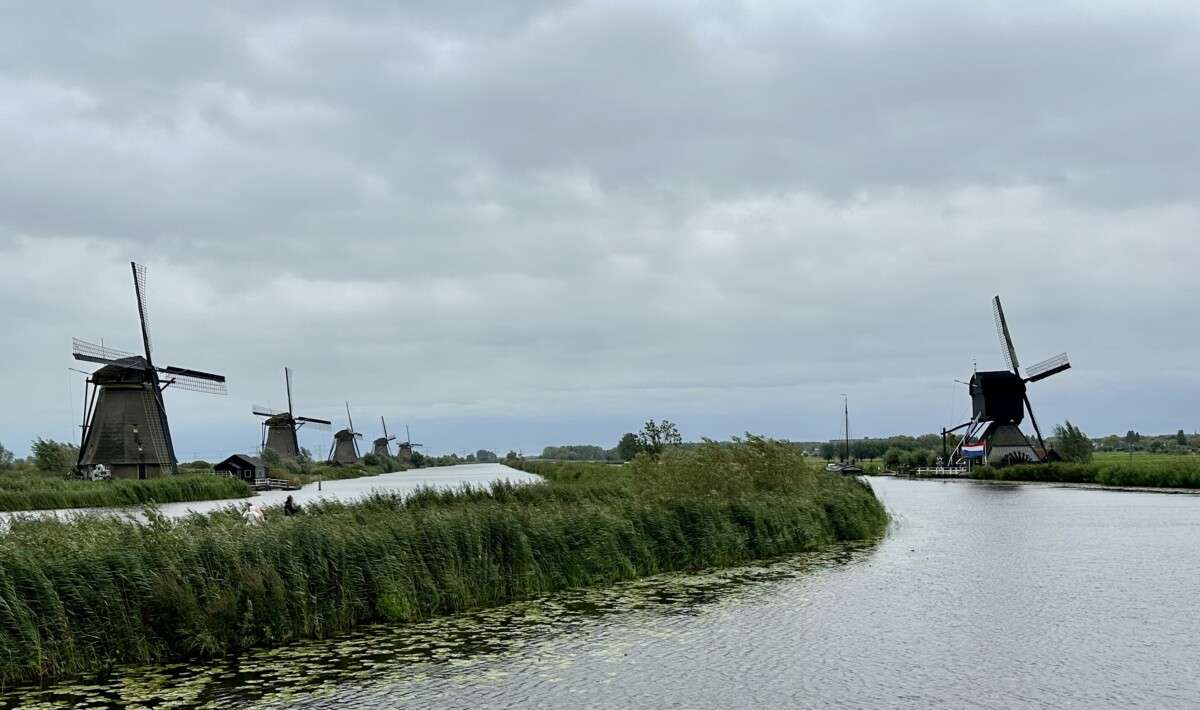From our hotel in Rotterdam, Netherlands, we noticed tall buildings in the distance. When we asked if Rotterdam extended out that far, we were told that they were actually buildings in The Hague. Like many of you, we had heard of The Hague on the news as the location of war crimes tribunals or other international justice hearings.
It turns out it was just a short 30 minute train ride over to the center of The Hague, so, of course, we had to go.

It was raining when we arrived in the morning. We decided to sit for a bit in a cafe and enjoy a bite to eat. We fully embraced (and loved) the European cafe culture while on this trip to Europe.

Eventually the rain ended and it turned out to be a beautiful day for walking around exploring this beautiful city.
“The Hague is known as the global hub of international law and arbitration. The International Court of Justice, the main judicial arm of the United Nations, is based in the city, as are the International Criminal Court, the Permanent Court of Arbitration, the Organisation for the Prohibition of Chemical Weapons, Europol, and approximately 200 other international governmental organizations.” – Wikipedia

We walked through beautiful cobblestone streets to reach the Peace Palace.

Along the way we walked by the Noordeinde Palace, which is the site of the Dutch King’s offices dating back to the 16th century.

Across the street from the Palace is this statue of William of Orange. He was a statesman and commander and, “In the Netherlands, he is known as the ‘Father of the Fatherland’…an honorary title for a respected (political) leader who has been of great influence on the formation of a nation.” Also, his murder on July 10, 1584, “was the first murder of a statesman committed with a gun.” – Wikipedia

After walking for about 30 minutes we reached the Peace Palace.



We had no idea that Andrew Carnegie funded the building of the Peace Palace.


We also walked by The Mauritshuis, a museum with the famous painting Girl with a Pearl Earring, an oil painting by Dutch painter Johannes Vermeer, dated c. 1665.

Unfortunately, we didn’t make a reservation (we were here during a busy summer time) for the museum. Here is a link if you would like to visit.

We did, however, purchase tickets for the Escher Museum.

The museum is located in Huis Fagel, a Palace owned by King Willem in the 1800’s.

The entrance was grand, with a circular staircase leading up to each of the floors holding Escher’s artwork.


Escher often used perspective to create his art, as he did in this early work, Inside St. Peter’s . “To make the print of St. Peter’s, Escher deliberately chose a dizzyingly high vantage point. As he sat sketching in the dome of the church, someone in fact asked him, ‘Sir, does it not make you dizzy?, to which Escher playfully replied, ‘That’s precisely the point.” – Escher Museum

Escher’s most famous works were on display.


“Some commissions were very dear to Escher. His most personal designs were the birth announcements for his sons, which he also printed himself.” – Escher Museum

“Nothing is quite as it seems in the amazing worlds of Escher. He asks his viewers, ‘Are you sure that a floor cannot also be a ceiling?
He demonstrates this literally in Up and Down (1947). At first glance, we appear to be looking at one building, but it soon becomes apparent that the floor is also the ceiling. We also view the same scene from two different perspectives, as we see the boy sitting on the steps and the woman in the window twice. In this highly imaginative building, Escher makes the impossible possible on paper.” – Escher Museum

“Are you convinced that you will end up higher after walking up a set of stairs?.”


“But a house drawn by Escher is never a normal house. The lookout tower in Belvedere (1958) has one floor running across the picture from left to right, while the floor above runs front to back. The bottom of the ladder is inside the house, but the top is outside. In the real world, this would be impossible, but in the print we hardly notice it.” – Escher Museum

Escher also had pieces which seemed to depict infinity – never-ending and with perpetual motion.

We really enjoyed our time visiting this museum.

There was so much to see and do in The Hague, we just didn’t have enough time here.





Hello Jeri and Joel,
Glad to know you had a good time exploring The Hague and the surrounding areas!
Thank you for an interesting tour and I know you could hardly wait to go back…yes there are a lot of wonderful places and countries to go to and immerse yourselves in the culture and have loads of fun!
Rod and Sasha
What a wonderful adventure! Thank you for the photos and commentary!